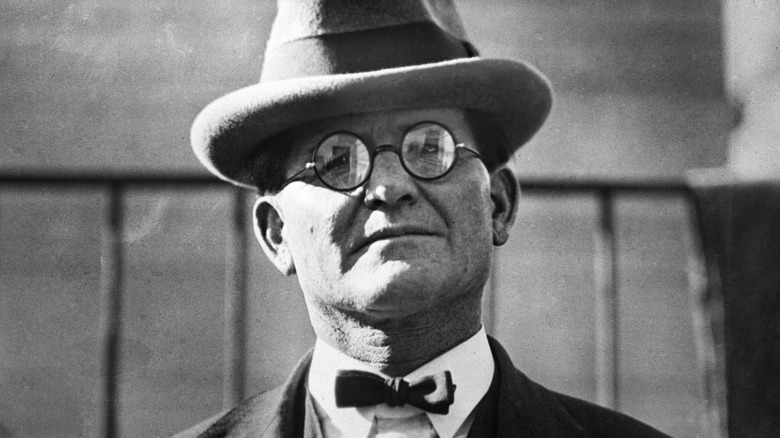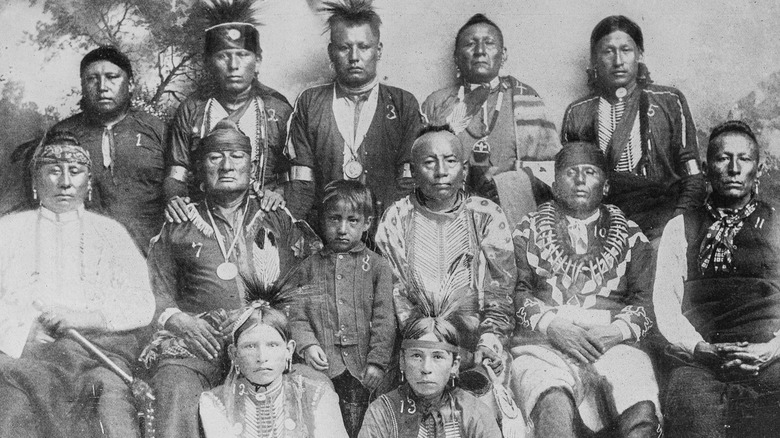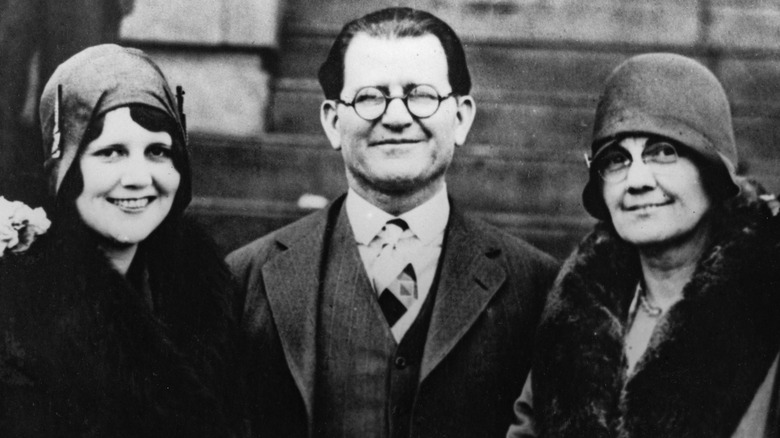What Happened To The Real William Hale Depicted In Killers Of The Flower Moon?
In 1921, members of the Osage Native American tribe in Oklahoma started dying one by one. As Famous Trials recounts, Charles Whitehorn was found with two bullet holes between his eyes. Anna Brown was found decomposed in the woods a week after being shot in the head. Various tribespeople started falling to a strange, wasting-away illness — as though they'd been poisoned. Henry Roan, father of two, was shot in the back of the head. Bill Smith spoke up about a killer in the Osage's midst, and his house exploded with him and his family inside. Amidst an air of ever-swelling paranoia and talk of "evil spirits" stalking the tribe, Smith and other Osage kept dogs for protection. Eventually, local dogs began to die of poisoning.
Even though investigators tallied 24 official dead, one investigator reportedly claimed it's likely that "hundreds and hundreds" died over a matter of a few years, per David Grann's "Killers of the Flower Moon: The Osage Murders and the Birth of the FBI." Even though Grann says a "web of silent conspirators" were implicated — local bankers, doctors, salesmen, lawyers, ranchers, and more — the entirety of the murderous scheme traced back to one man: William Hale. A prominent local rancher, philanthropist, deputy sheriff, bank owner, and more, Hale inveigled his way into Osage's confidences at a time when the tribe struck rich through oil. According to the FBI, he hired assassins to remove people from the equation so he could receive life insurance money. He eventually got life in prison, served 21 years, got out on parole in 1947, and died in a nursing home in 1962.
The Reign of Terror against the Osage tribe
The Osage get their name from the Osage River, where the National Park Service says they centered their lives. Hunting across central United States within its web of rivers, including the Missouri and the Mississippi, the Osage — more properly "Ni-u-kon-ska," or "People of the Middle Waters" — occupied their land until the 1803 Louisiana Purchase forced them out. By 1872 they were relocated to the Osage reservation at Pawhuska, Oklahoma, north of Tulsa. It was there that the Osage became the "wealthiest people on Earth" following the discovery of oil on their reservation, as the University of Arkansas (UA) at Little Rock says. Thanks to federally mandated "headrights" outlined in the Osage Act of 1906, each of the Osage's 2,229 members earned royalties on oil sales at a time when the oil market boomed.
Future Osage killer William Hale, meanwhile, arrived in Oklahoma as a "cowboy living in a tent," as Lawrence Hogan wrote in "The Osage Indian Murders." He conducted business with the tribe for years, leasing and selling property, and grew into a wealthy businessman connected to all facets of local life. Dubbed "King of the Osage Hills," he called himself a "true friend" of the Osage in a letter to a member of the tribe, per David Grann's "Killers of the Flower Moon." Whether something changed in Hale along the way, he grew mad with greed during the oil boom, or he'd always feigned friendship with the Osage, remains unknown. In fact, he never once admitted to hiring anyone to murder anyone.
The dethroned King of Osage Hills
It wasn't easy to bring William Hale to justice. Even after Hale received $25,000 in life insurance policy money (almost $450,000 modernly) following the aforementioned 1923 death of Henry Roan, suspicions didn't turn against him — such was his renown within the local community. But following the detonation of Bill Smith's house, the Osage chieftain admitted it was time to get "the white father in Washington" involved, which eventually led investigators to Hale via hitmen linked to various Osage deaths (per National Council on Indian Opportunity).
Hale's first trial failed because of complications between state, federal, and Native jurisdictions. This kicked his trial to the state level, where those involved feared his reputation would shield him. It took all the way until 1929 to convict Hale and one of his hired guns, John Ramsey. At the time the Osage County News wrote that it took a mere 2.5 hours for the jury to find them both guilty of first-degree murder. Hale "showed no emotion" while receiving his verdict, even as his wife broke down and wept next to him.
Hale was sentenced to life in prison but got out on parole within a couple decades. His activities following his release remain unclear, but we know that, contrary to his wishes, his parole conditions prevented him from living in Oklahoma. At some point Hale moved into a nursing home in Arizona, where he died in 1962. He was buried in Wichita, Kansas.


